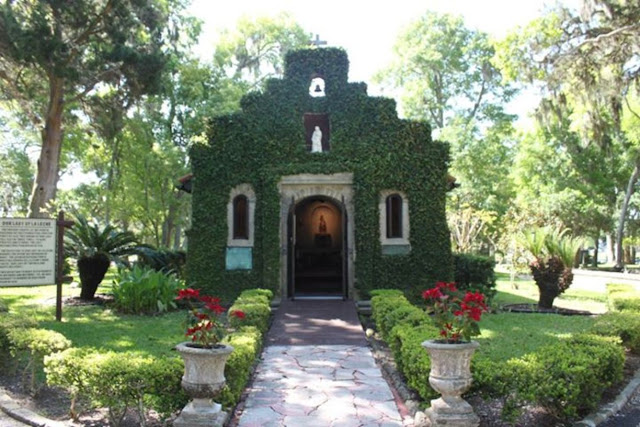Origins go back to the founding of our city
Mission Nombre de Dios traces its origins to the founding of the City of St. Augustine, America’s oldest city, in 1565. On September 8, 1565, Pedro Menéndez de Avilés landed and proclaimed this site for Spain and the Church. It was here that Menéndez knelt to kiss a wooden cross presented to him by Father Francisco López de Mendoza Grajales, chaplain of his expedition. It was on these grounds that Fr. López would celebrate the first parish Mass and begin the work at America’s first mission. It was at this sacred spot that the Spanish settlers would begin the devotion to Our Lady of La Leche that continues into the present.
Mission Nombre de Dios traces its origins to the founding of the City of St. Augustine, America’s oldest city, in 1565. On September 8, 1565, Pedro Menéndez de Avilés landed and proclaimed this site for Spain and the Church. It was here that Menéndez knelt to kiss a wooden cross presented to him by Father Francisco López de Mendoza Grajales, chaplain of his expedition. It was on these grounds that Fr. López would celebrate the first parish Mass and begin the work at America’s first mission. It was at this sacred spot that the Spanish settlers would begin the devotion to Our Lady of La Leche that continues into the present.






